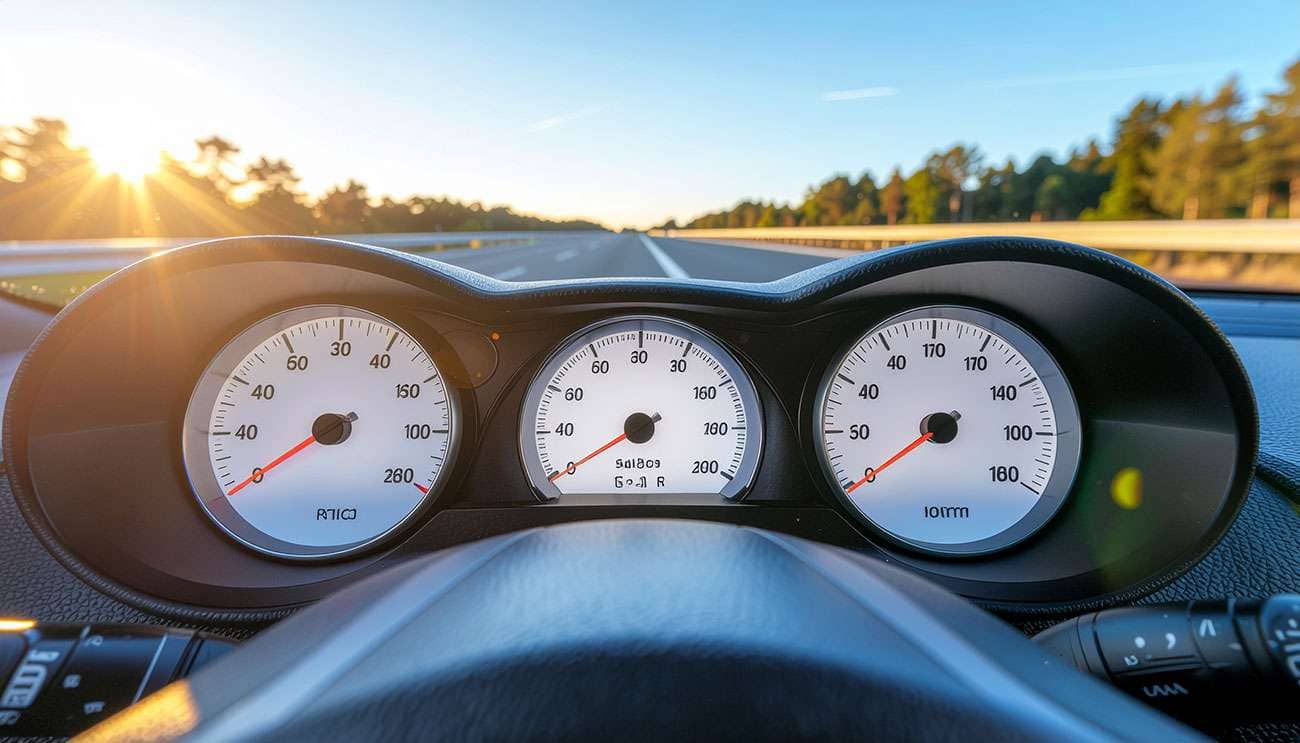When you change tire sizes, your speedometer and odometer readings become inaccurate because they're calibrated to your original equipment tire circumference. Our Speedometer Calibration Calculator shows you exactly how tire size changes affect your speed readings and helps you understand the impact on vehicle performance and legal compliance.
How Speedometers Work
Vehicle speedometers calculate speed based on wheel rotations. They're calibrated to your original tire's circumference. When you change tire sizes, the number of rotations per mile changes, affecting speedometer accuracy.
Key Factors:
- Tire circumference determines rotations per mile
- Larger tires = fewer rotations = speedometer reads low
- Smaller tires = more rotations = speedometer reads high
- Even small changes can significantly impact accuracy
Legal and Safety Implications
Speedometer accuracy affects legal compliance and safety. Most states require speedometers to be accurate within certain tolerances, typically ±5%. Inaccurate readings can lead to unintentional violations or unsafe driving conditions.
Considerations:
- Speed limit compliance
- Insurance implications
- Odometer accuracy for warranties
- Cruise control functionality
Correction Methods
If your tire size change significantly affects speedometer accuracy, several correction methods are available depending on your vehicle's technology and your budget.
Options Include:
- ECU reprogramming/tuning
- Speedometer gear changes
- Electronic correction modules
- GPS-based speedometer apps
Frequently Asked Questions
What's considered an acceptable speedometer error?
Generally, ±3% is considered excellent accuracy, while ±5% is the maximum acceptable error for most legal and practical purposes. Errors beyond 5% may require correction for safety and legal compliance.
Do larger tires make my speedometer read high or low?
Larger tires (increased overall diameter) make your speedometer read LOWER than your actual speed. This is because larger tires cover more ground per revolution, but your speedometer still thinks you're using the original smaller tires.
How does this affect my odometer?
Odometer errors mirror speedometer errors. If your speedometer reads low (larger tires), your odometer will also accumulate miles slower than actual distance traveled. This affects warranty mileage, maintenance intervals, and resale value calculations.
Can I fix speedometer errors with reprogramming?
Many modern vehicles can have their speedometer calibration adjusted through ECU programming or tuning. This is typically done by professional shops and may affect other vehicle systems, so it should be performed by qualified technicians.
Do speedometer errors affect fuel economy calculations?
Yes, if your odometer reads incorrectly, your calculated fuel economy will also be wrong. If your odometer reads low (larger tires), your calculated MPG will appear better than it actually is because you're traveling further than the odometer records.
What about ABS and traction control systems?
Significant tire size changes can affect these safety systems since they rely on wheel speed sensors. Most systems can adapt to small changes (within 3%), but larger changes may require recalibration or could cause warning lights.
